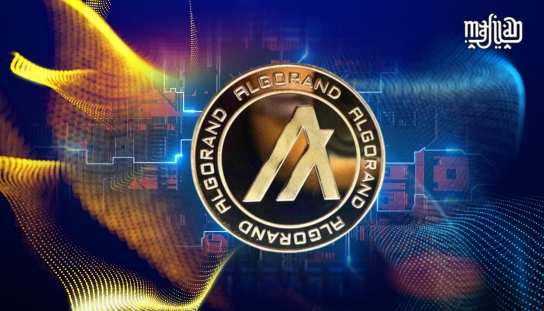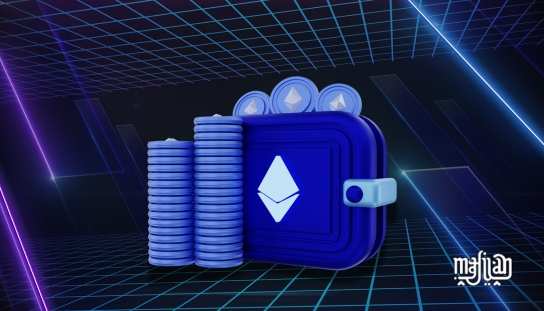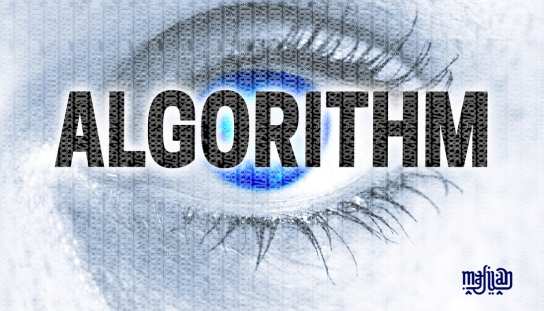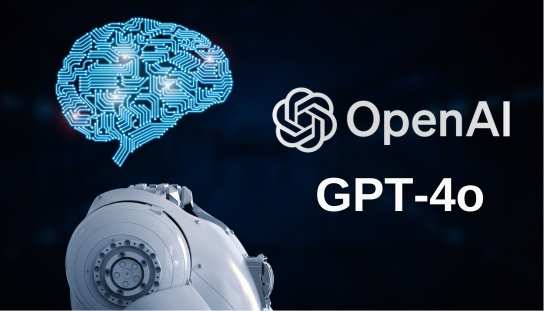Cryptocurrency and blockchain technology have revolutionized the way we think about finance and digital transactions. Among the myriad of blockchain projects, Algorand stands out as a pioneering platform offering a unique approach to consensus and scalability. In this article, we delve into the world of Algorand, exploring its history, technology, features, use cases, and future potential.
1. What is Algorand (ALGO)?
Algorand (ALGO) is a blockchain platform designed to solve some of the most pressing challenges faced by traditional blockchain networks, such as scalability, security, and decentralization. Founded by Silvio Micali, a Turing Award-winning cryptographer, Algorand aims to create a borderless economy by providing a platform for frictionless financial exchanges and decentralized applications (dApps).
WARNING: Algorand’s user agreement strictly prohibits selling or disposing of any ALGO tokens received from a Foundation Program to any person in the U.S. Additionally, Foundation Program participants cannot reside in the U.S. or otherwise meet the definition of a U.S. person under Regulation S of the Securities Act of 1933.1
2. History of Algorand (ALGO)
2.1 Founding of Algorand (ALGO)
Algorand was founded in 2017 by Silvio Micali, a renowned computer scientist and professor at MIT. Micali envisioned a blockchain platform that could achieve high throughput without sacrificing security or decentralization.
2.2 Algorand’s (ALGO) Technological Breakthroughs
Algorand introduced several groundbreaking innovations, including its Pure Proof of Stake (PPoS) consensus mechanism, which ensures the security and decentralization of the network while enabling high transaction throughput.
3. How Algorand (ALGO) Works
3.1 Pure Proof of Stake (PPoS)
Unlike traditional Proof of Work (PoW) consensus mechanisms used by platforms like Bitcoin, Algorand utilizes PPoS, where users are randomly selected to propose and validate blocks based on the amount of Algo, the native cryptocurrency, they hold. This ensures fairness, security, and efficiency in the consensus process.
3.2 Layer-1 Smart Contracts
Algorand also supports Layer-1 smart contracts, allowing developers to create complex decentralized applications directly on the blockchain without relying on additional layers or protocols.
4. Key Features
4.1 Scalability
Scalability is one of Algorand’s core strengths, with the ability to process thousands of transactions per second, making it suitable for high-volume applications such as financial trading and payment processing.
4.2 Security
With its PPoS consensus mechanism and cryptographic techniques, Algorand provides a high level of security against attacks such as double spending and Sybil attacks.
4.3 Decentralization
Algorand’s decentralized governance model ensures that no single entity has control over the network, promoting censorship resistance and inclusivity.
5. Use Cases
5.1 Financial Applications
Algorand is well-suited for a wide range of financial applications, including asset tokenization, cross-border payments, and decentralized exchanges (DEXs).
5.2 Asset Tokenization
By leveraging Algorand’s blockchain infrastructure, assets such as real estate, stocks, and commodities can be tokenized and traded in a secure and transparent manner.
5.3 Decentralized Finance (DeFi)
The rise of decentralized finance (DeFi) has seen an increasing number of projects built on Algorand, offering services such as lending, borrowing, and automated market making.
6. Future Potential
6.1 Growth Opportunities
As blockchain technology continues to evolve, Algorand is well-positioned to capitalize on emerging trends and opportunities, including the Internet of Things (IoT), digital identity, and supply chain management.
6.2 Challenges Ahead
Despite its promising features, Algorand faces challenges such as adoption hurdles, regulatory uncertainty, and competition from other blockchain platforms.
Algorand represents a significant advancement in blockchain technology, offering a scalable, secure, and decentralized platform for building the next generation of digital applications and financial services. With its innovative approach to consensus and commitment to openness and transparency, Algorand is poised to play a crucial role in shaping the future of finance and decentralized technology.
FAQs (Frequently Asked Questions)
- How does Algorand achieve scalability? Algorand achieves scalability through its Pure Proof of Stake (PPoS) consensus mechanism, which enables high transaction throughput without compromising security or decentralization.
- What makes Algorand’s consensus mechanism unique? Algorand’s consensus mechanism is unique in its use of randomness and cryptographic techniques to select and validate blocks, ensuring fairness and security in the network.
- Can I create smart contracts on Algorand? Yes, Algorand supports Layer-1 smart contracts, allowing developers to create and deploy complex decentralized applications directly on the blockchain.
- Is Algorand environmentally friendly? Yes, Algorand’s consensus mechanism does not require intensive computational resources like traditional Proof of Work (PoW) systems, making it more environmentally friendly.
- How does Algorand compare to other blockchain platforms? Algorand distinguishes itself from other blockchain platforms through its unique consensus mechanism, scalability, security features, and support for Layer-1 smart contracts.
Algorand Protocol Structure
In the ever-evolving landscape of blockchain technology, protocols serve as the backbone of decentralized networks, orchestrating the seamless execution of transactions and ensuring the integrity of the system. Among these protocols, Algorand has emerged as a frontrunner, distinguished by its innovative approach to scalability, security, and decentralization. In this article, we delve into the intricate structure of the Algorand protocol, dissecting its core components, layered architecture, security mechanisms, scalability solutions, smart contracts, governance model, and impact on the blockchain ecosystem.
Introduction
At its essence, the Algorand protocol is a decentralized, secure, and scalable blockchain platform designed to facilitate the seamless transfer of value and execution of smart contracts. Developed by Silvio Micali and his team, Algorand embodies the principles of efficiency, inclusivity, and decentralization, offering a robust foundation for building decentralized applications (dApps) and conducting frictionless transactions.
1. What is Algorand Protocol?
The Algorand protocol is a decentralized consensus mechanism that leverages a unique combination of Pure Proof of Stake (PPoS), cryptographic sortition, and Byzantine Agreement to achieve consensus without the need for a central authority. Unlike traditional proof-of-work (PoW) protocols that consume vast amounts of energy, Algorand’s PPoS ensures fast, secure, and energy-efficient transaction processing.
2. Core Components
2.1 Pure Proof of Stake
Algorand’s Pure Proof of Stake (PPoS) consensus mechanism empowers users to participate in the block validation process based on the number of Algos they hold. Through a cryptographic sortition process, a randomly selected committee of users is tasked with proposing and validating blocks, ensuring decentralization and security without the need for costly computational resources.
2.2 Cryptographic Sortition
Cryptographic sortition lies at the heart of Algorand’s consensus mechanism, enabling the random selection of users to participate in the block validation process. This process ensures fairness and security by preventing any single entity from controlling the network, thereby mitigating the risk of collusion or manipulation.
2.3 Byzantine Agreement
Algorand employs Byzantine Agreement to achieve consensus among network participants, ensuring that all honest users agree on the state of the blockchain. Through a series of cryptographic protocols and message passing, Algorand’s Byzantine Agreement mechanism guarantees the integrity and immutability of transactions, even in the presence of malicious actors.
3. Layered Architecture
3.1 Consensus Layer
The consensus layer of the Algorand protocol is responsible for coordinating the agreement among network participants on the validity of transactions and the order in which they are included in the blockchain. By leveraging PPoS and Byzantine Agreement, Algorand achieves fast and secure transaction finality, enabling rapid confirmation and settlement of transactions.
3.2 Transaction Layer
The transaction layer of the Algorand protocol handles the creation, validation, and propagation of transactions across the network. Through its efficient and lightweight transaction protocol, Algorand ensures high throughput and low latency, making it ideal for applications requiring real-time transaction processing.
3.3 Economic Layer
The economic layer of the Algorand protocol governs the distribution and allocation of Algos, the native cryptocurrency of the Algorand network. Through its innovative economic incentives and rewards system, Algorand encourages active participation in the network, fostering decentralization and security.
4. Security Mechanisms
4.1 Byzantine Agreement
Byzantine Agreement serves as a cornerstone of Algorand’s security mechanisms, ensuring that all honest participants agree on the state of the blockchain despite the presence of malicious actors. Through its rigorous cryptographic protocols and decentralized consensus mechanism, Algorand achieves robust security and resistance to attacks.
4.2 Verifiable Random Function
Algorand employs Verifiable Random Function (VRF) to ensure the randomness and unpredictability of the selection process for block proposers and committee members. By leveraging VRF, Algorand enhances the security and fairness of its consensus mechanism, preventing any single entity from controlling the selection process.
5. Scalability Solutions
5.1 Fast and Efficient Consensus
Algorand’s consensus mechanism is designed to scale horizontally, enabling the network to handle a high volume of transactions with minimal latency. By leveraging PPoS and cryptographic sortition, Algorand achieves fast and efficient consensus without sacrificing security or decentralization.
5.2 Atomic Transfers
Atomic transfers allow multiple transactions to be executed simultaneously, ensuring that either all transactions are executed successfully or none at all. This atomicity property eliminates the risk of partial execution or double spending, enhancing the security and reliability of transactions on the Algorand network.
6. Smart Contracts
6.1 Algorand Smart Contracts
Algorand’s smart contract platform enables developers to deploy and execute decentralized applications (dApps) directly on the blockchain. By leveraging Algorand’s scalable and secure infrastructure, developers can build innovative dApps with programmable logic and conditional execution, unlocking new possibilities for decentralized finance (DeFi), decentralized exchanges (DEXs), and tokenization.
7. Governance Model
7.1 On-chain Governance
Algorand employs an on-chain governance model that enables stakeholders to participate in the decision-making process regarding protocol upgrades, parameter adjustments, and governance proposals. Through its transparent and inclusive governance mechanism, Algorand fosters community engagement and consensus, ensuring the long-term sustainability and evolution of the protocol.
8. Algorand’s Impact
The Algorand protocol has made significant strides in advancing the adoption and innovation of blockchain technology across various industries and use cases. From financial services and supply chain management to digital identity and decentralized governance, Algorand’s scalable, secure, and decentralized infrastructure is paving the way for a more inclusive and equitable future.
3. Staking Mechanism Explained
3.1 What is Staking?
Staking is a process where network participants lock up a certain amount of cryptocurrency to support the operations of a blockchain network. In return, they receive rewards for their contributions. Staking not only enhances network security but also incentivizes holders to actively participate in the ecosystem.
3.2 The Concept of Pure Proof of Stake
Algorand employs a staking mechanism known as Pure Proof of Stake (PPoS). Unlike traditional proof-of-stake protocols, where validators are chosen based on the number of coins they hold, Algorand’s PPoS selects participants randomly, ensuring fairness and preventing centralization. This random selection process, facilitated by cryptographic sortition, eliminates the need for energy-intensive mining and promotes a more sustainable consensus model.
3.3 Benefits of Pure Proof of Stake
PPoS offers several benefits, including enhanced security, scalability, and decentralization. By randomly selecting validators for each block, Algorand prevents the concentration of power among a few stakeholders, making it resistant to attacks and collusion. Moreover, PPoS enables Algorand to achieve high transaction throughput without compromising on security or decentralization.
4. How Algorand Implements Staking
4.1 Algorand Consensus Protocol
Algorand’s consensus protocol consists of two key mechanisms: Binary Byzantine Agreement (BBA) and cryptographic sortition. BBA ensures agreement on a single block in each round, while cryptographic sortition randomly selects a committee of validators to participate in block production and consensus.
4.2 Participation and Rewards
To participate in staking on Algorand, users must hold a minimum amount of ALGO, the platform’s native cryptocurrency. Validators are chosen randomly from the pool of eligible participants, and rewards are distributed based on their contributions to the network. Staking rewards on Algorand vary depending on factors such as network participation and inflation rate.
5. Requirements for Algorand Staking
5.1 Minimum Algo Holdings
To stake Algorand, users must hold a minimum balance of ALGO tokens in their wallets. The exact amount required for staking may vary depending on network conditions and participation levels.
5.2 Hardware and Software
Staking on Algorand does not require specialized hardware or software. Users can stake their ALGO tokens using a compatible wallet or through a staking service provider.
6. How to Stake Algorand
6.1 Choosing a Staking Partner
Before staking Algorand, users should research and select a reliable staking partner or service provider. Factors to consider include reputation, fees, and security measures.
6.2 Setting Up a Wallet
To stake ALGO tokens, users need to set up a compatible wallet that supports staking functionality. Popular options include the official Algorand Wallet and third-party wallets that integrate with the Algorand network.
6.3 Initiating the Staking Process
Once the wallet is set up, users can initiate the staking process by transferring ALGO tokens to their staking address and opting into the staking program. The tokens will then be eligible for staking rewards based on their participation in the network.
7. Risks and Considerations
7.1 Market Volatility
Like any investment, staking carries inherent risks, including market volatility and price fluctuations. Participants should be aware of the potential for loss and only stake funds they can afford to lose.
7.2 Security Concerns
While Algorand employs robust security measures, staking carries certain security risks, such as potential attacks on network validators or vulnerabilities in staking wallets. Users should take precautions to safeguard their staked assets and choose reputable staking partners.
Algorand’s Pure Proof of Stake mechanism offers an innovative approach to blockchain consensus, combining security, scalability, and decentralization. By allowing anyone to participate in staking and earn rewards, Algorand incentivizes active engagement in its ecosystem while ensuring the integrity and efficiency of its network.
Q1. Can I stake Algorand with a small amount of ALGO tokens? Yes, Algorand allows users to stake any amount of ALGO tokens, although higher balances may yield proportionally higher rewards.
Q2. How often are staking rewards distributed on Algorand? Staking rewards on Algorand are typically distributed daily, although the frequency may vary depending on network conditions.
Q3. Are there any penalties for unstaking Algorand? Unstaking ALGO tokens on Algorand is subject to a cooldown period, during which the tokens remain locked and ineligible for rewards. However, there are no additional penalties for unstaking.
Algorand Block Production Under PPoS
Proof-of-Stake vs. PPoS
While Proof-of-Stake (PoS) is a well-known consensus mechanism, Algorand introduces Pure Proof-of-Stake (PPoS) as an enhancement. Unlike traditional PoS, where block proposers are chosen based on their stake, PPoS randomly selects block producers irrespective of their holdings, ensuring fairness and decentralization.
3. Algorand’s PPoS Mechanism
How PPoS works?
In PPoS, block producers are chosen randomly from the pool of token holders. This selection process, known as sortition, is based on cryptographic algorithms, ensuring unbiased and unpredictable selection. Selected producers then propose and validate blocks, contributing to the network’s consensus.
Benefits of PPoS
PPoS offers several advantages, including enhanced security, decentralization, and scalability. By eliminating the need for energy-intensive mining and favoring participation based on stake, Algorand achieves a more sustainable and inclusive consensus model.
4. Block Production in PPoS
Role of Block Producers
Block producers in PPoS play a crucial role in the network’s operation. They propose new blocks, validate transactions, and secure the blockchain through cryptographic techniques. Their efforts ensure the integrity and continuity of the ledger.
Process of Block Production
The process of block production in PPoS involves multiple stages, including block proposal, validation, and acceptance. Upon selection, block producers create a new block containing valid transactions and propagate it across the network. Consensus is reached through Byzantine Agreement, ensuring agreement among honest participants.
5. Factors Affecting PPoS
Stake Size
The size of one’s stake directly influences the probability of being selected as a block producer in PPoS. Higher stakes increase the chances of participation, incentivizing token holders to actively engage in the network.
Network Connectivity
Network connectivity also plays a crucial role in PPoS, as it affects the speed and reliability of block propagation. Nodes with better connectivity contribute more effectively to the consensus process, enhancing the network’s overall performance.
Algorithm Parameters
The parameters of the PPoS algorithm, such as the block time and selection criteria, can impact the efficiency and security of the network. Optimizing these parameters requires careful consideration and ongoing research.
6. Ensuring Security
Byzantine Agreement
PPoS relies on Byzantine Agreement to achieve consensus among network participants. This Byzantine Fault Tolerance ensures that even in the presence of malicious actors or network disruptions, the integrity of the ledger is maintained.
Cryptographic Techniques
Cryptographic techniques such as digital signatures and hash functions play a vital role in securing transactions and blocks in PPoS. These techniques ensure the authenticity and immutability of the blockchain, safeguarding it against tampering and fraud.
7. Challenges and Solutions
Scalability Issues
While PPoS offers scalability advantages over traditional consensus mechanisms, it still faces challenges in handling large transaction volumes. Research efforts are underway to enhance Algorand’s scalability without compromising security or decentralization.
Network Congestion
During periods of high demand, network congestion can occur, leading to delays in transaction processing and block propagation. Solutions such as sharding and off-chain scaling are being explored to mitigate these congestion issues and improve overall network performance.
8. Future Developments
Research and Improvements
The future of Algorand’s PPoS lies in ongoing research and development efforts. Innovations in consensus algorithms, network architecture, and governance mechanisms will further enhance the platform’s capabilities and drive its adoption in various industries.
Algorand’s PPoS represents a significant advancement in blockchain technology, offering a secure, scalable, and inclusive consensus mechanism. By leveraging random selection and cryptographic techniques, PPoS ensures fairness and decentralization while addressing key challenges faced by traditional blockchain systems. As research and development continue, Algorand is poised to play a pivotal role in shaping the future of decentralized finance and beyond.
FAQs (Frequently Asked Questions)
- Is Algorand’s PPoS environmentally friendly? Yes, Algorand’s PPoS eliminates the need for energy-intensive mining, making it more environmentally sustainable compared to Proof-of-Work systems.
- How does Algorand ensure fairness in block production under PPoS? Algorand achieves fairness through random selection of block producers, ensuring that all token holders have an equal chance of participating in the consensus process.
- Can small token holders participate in block production on Algorand’s network? Yes, small token holders can participate in block production on Algorand’s network, as the selection process is proportional to one’s stake in the network.
- What are some security features of Algorand’s PPoS? Algorand’s PPoS relies on cryptographic techniques such as digital signatures and hash functions to secure transactions and blocks, ensuring the integrity of the blockchain.
- What are the scalability challenges faced by Algorand’s PPoS? While Algorand’s PPoS offers scalability advantages, it still faces challenges in handling large transaction volumes. Efforts are underway to address these challenges through research and innovation.
The Algorand Foundation
The Algorand Foundation stands as a beacon of innovation in the realm of blockchain technology. Established with a vision to facilitate the widespread adoption of decentralized systems, the Foundation plays a pivotal role in nurturing the growth of the Algorand ecosystem.
2. History
2.1 Founding
The genesis of the Algorand Foundation traces back to [insert year], when [founder(s) name] laid the groundwork for a revolutionary blockchain platform.
2.2 Early Development
In its nascent stages, the Foundation focused on refining the Algorand protocol, ensuring scalability, security, and decentralization.
3. Mission and Goals
3.1 Empowering Decentralization
At its core, the Algorand Foundation is committed to empowering decentralization by providing the tools and infrastructure necessary for seamless interaction within the digital economy.
3.2 Promoting Innovation
One of the primary objectives of the Foundation is to foster innovation by supporting research and development initiatives aimed at advancing blockchain technology.
4. Governance Structure
4.1 Decentralized Governance
The Foundation operates on the principles of decentralization, with decision-making processes distributed across various stakeholders within the ecosystem.
4.2 Advisory Board
An esteemed advisory board comprising industry experts and thought leaders provides strategic guidance to the Foundation.
5. Key Initiatives
5.1 Developer Support Programs
The Foundation spearheads various initiatives to support developers in building and deploying applications on the Algorand platform.
5.2 Education and Awareness Campaigns
Efforts are made to educate the broader community about the potential of blockchain technology through workshops, seminars, and online resources.
6. Algorand Ecosystem
6.1 Diverse Applications
The Algorand ecosystem encompasses a diverse array of applications, ranging from decentralized finance (DeFi) to asset tokenization and beyond.
6.2 Scalability and Efficiency
With its innovative consensus mechanism, Algorand offers unparalleled scalability and efficiency, making it an ideal platform for a wide range of use cases.
7. Partnerships
7.1 Collaborative Ventures
The Foundation actively seeks partnerships with organizations that share its vision of promoting decentralization and fostering innovation.
7.2 Strategic Alliances
Collaborations with academic institutions, governments, and industry leaders serve to broaden the reach and impact of the Algorand ecosystem.
8. Funding
8.1 Sustainable Funding Model
The Foundation sustains its operations through a combination of grants, donations, and strategic investments, ensuring long-term viability and independence.
8.2 Financial Transparency
Transparent financial practices are upheld to instill trust and confidence within the community.
9. Impact and Achievements
9.1 Global Reach
The Algorand Foundation’s initiatives have garnered international recognition, making significant strides in advancing blockchain adoption worldwide.
9.2 Milestones
From protocol upgrades to ecosystem expansions, the Foundation has achieved numerous milestones since its inception.
10. Challenges
10.1 Regulatory Compliance
Navigating the evolving regulatory landscape poses challenges for the Foundation, requiring proactive engagement with policymakers and regulators.
10.2 Technical Innovation
Continuous innovation is essential to address scalability, security, and usability challenges faced by blockchain platforms.
11. Future Outlook
11.1 Growth Trajectory
With a clear vision and robust ecosystem, the Algorand Foundation is poised for exponential growth in the coming years.
11.2 Emerging Opportunities
The Foundation remains vigilant in identifying and capitalizing on emerging opportunities to further its mission.
12. Community Engagement
12.1 Inclusive Participation
Community feedback and involvement are integral to shaping the future direction of the Algorand ecosystem.
12.2 Grassroots Initiatives
Initiatives are undertaken to empower community members to contribute to the growth and development of the ecosystem.
13. Transparency
13.1 Open Communication
The Foundation maintains open channels of communication to foster transparency and accountability.
13.2 Governance Mechanisms
Transparent governance mechanisms ensure that decisions are made in the best interest of the community.
The Algorand Foundation stands as a beacon of innovation, driving the adoption of blockchain technology through its commitment to decentralization, innovation, and community empowerment. With a clear mission, robust governance structure, and unwavering dedication to transparency, the Foundation is poised to shape the future of the digital economy.
FAQs (Frequently Asked Questions)
- What is the Algorand Foundation?
- The Algorand Foundation is a non-profit organization dedicated to advancing the Algorand blockchain ecosystem through various initiatives and programs.
- How is the Algorand Foundation funded?
- The Foundation sustains its operations through grants, donations, and strategic investments from various sources.
- What are some key achievements of the Algorand Foundation?
- The Foundation has achieved significant milestones in protocol development, ecosystem expansion, and global outreach, contributing to the widespread adoption of blockchain technology.
- How can I get involved with the Algorand Foundation?
- Community members can participate in various programs, contribute to open-source projects, and engage with the Foundation through social channels and events.
- What sets the Algorand Foundation apart from other blockchain initiatives?
- The Foundation’s commitment to decentralization, innovation, and transparency distinguishes it as a leader in the blockchain space, driving meaningful impact and adoption worldwide.







Pretty great post. I just stumbled upon your blog and wanted to say that I have truly enjoyed browsing your weblog posts.
After all I’ll be subscribing to your rss feed and I
am holping you write once more soon! https://Lvivforum.Pp.ua